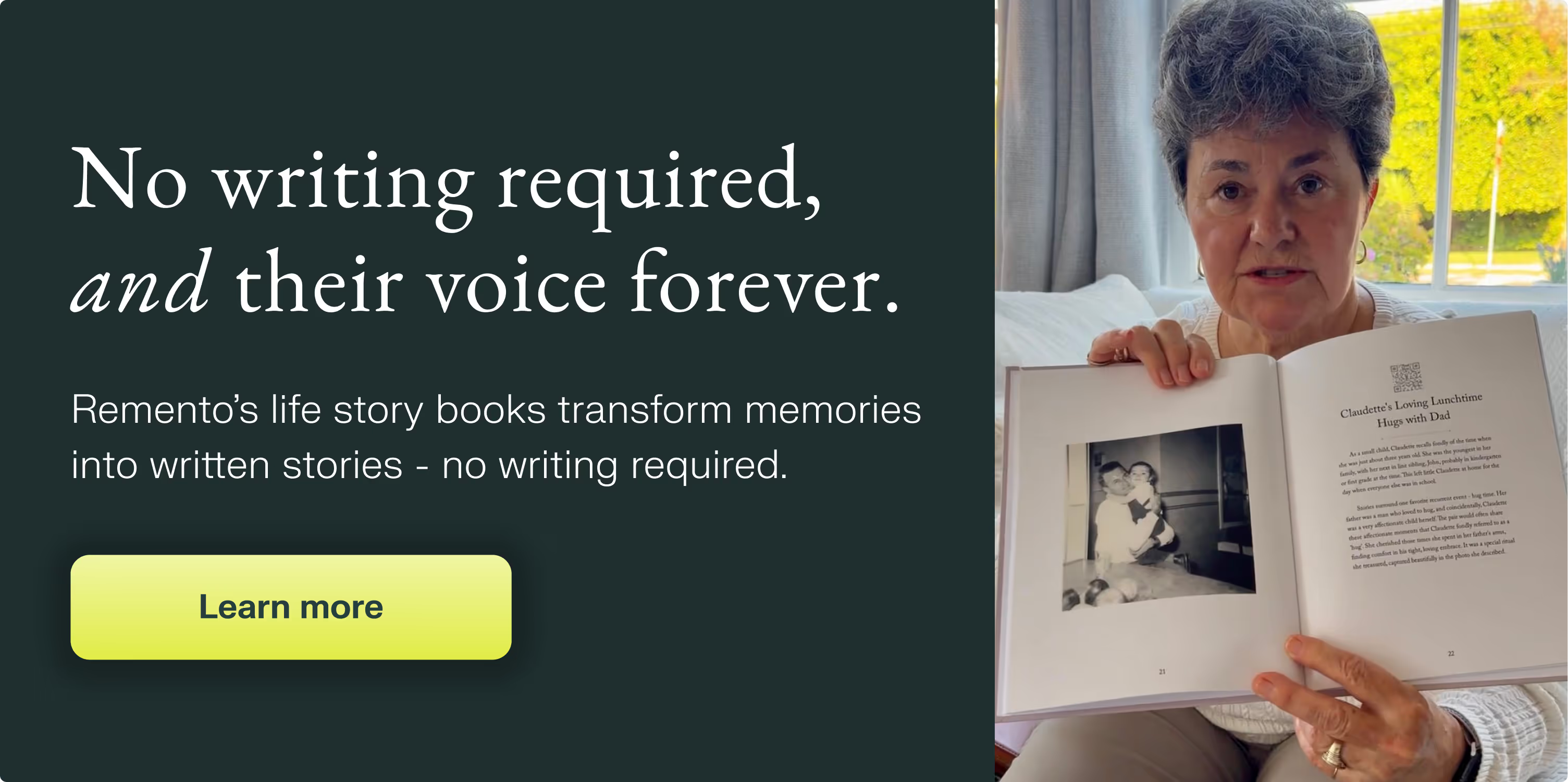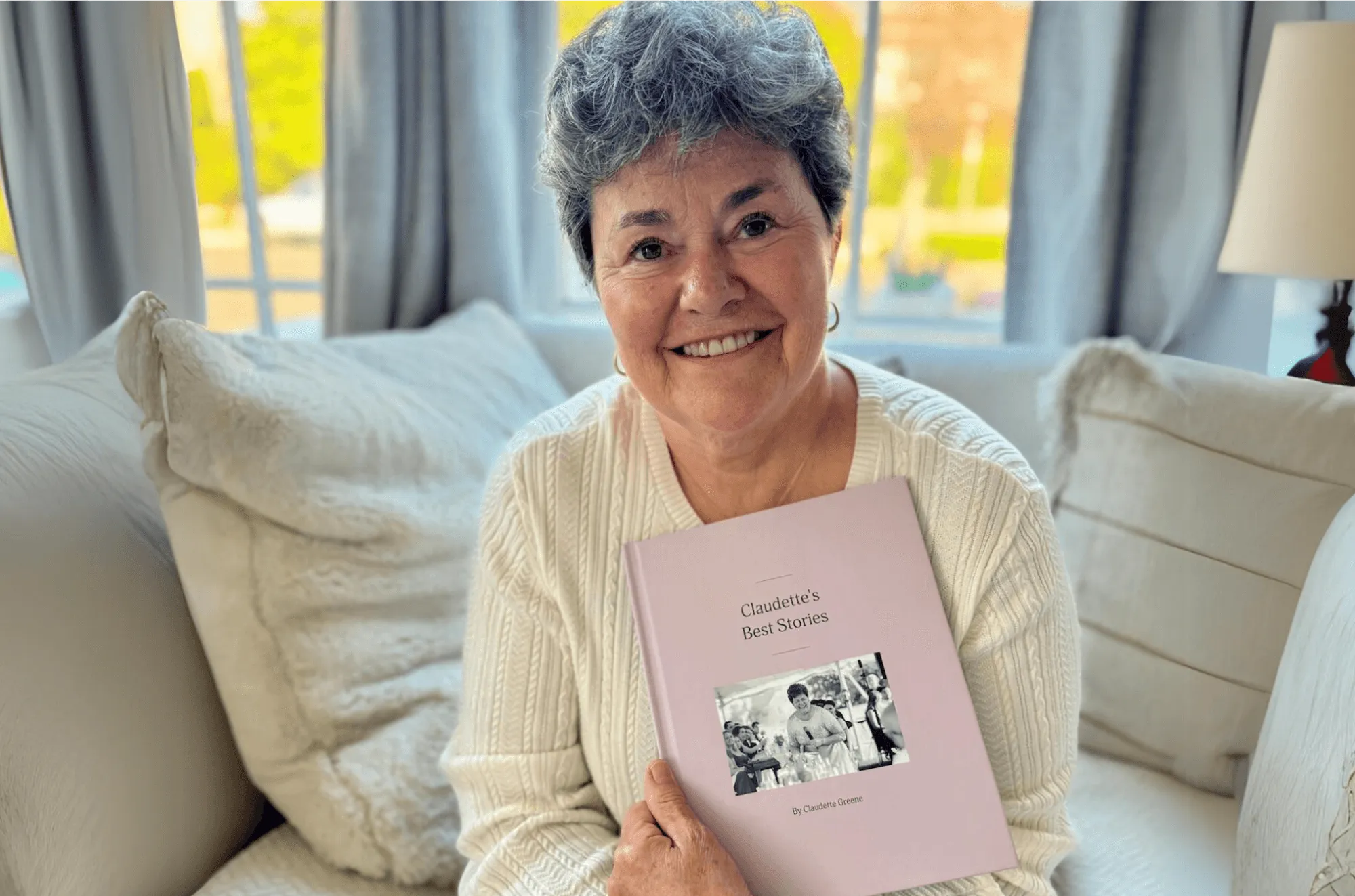Guaranteed to teach you things you never knew.
Tips and Tricks for Curating a Memorable Family Story Book
Unlock the secrets to crafting a heartfelt family storybook that captures cherished memories and deepens the bonds that connect generations, ensuring your family’s legacy lives on.
Are you looking to create a special family story book or family history book to preserve and share your family’s memories? If so, you’ve come to the right place! In this blog post, we’ll give you some helpful tips and tricks to curate a memorable family story book that will be cherished for years to come. From picking the right photos and writing stories to deciding which details should be included, you’ll find lots of ideas for putting together the perfect family story book.
Why Create a Family Story Book
A family story book is a personalized book that recounts the life stories of your family members. It's an ideal way to document your family history, preserve family memories, and pass on traditions from one generation to another. Creating a family story book allows you to share your family's legacy with future generations and ensures that the family's history and stories won't be forgotten. A family story book can be in the form of a memory book, life story book, or even a memoir, and the possibilities are endless. This customized book is unique to your family, as it shares the stories of your loved ones, showcases family photographs and highlights important milestones in your family history. Not only does it serve as a record of your family's history, but it can also help your children or grandchildren understand and appreciate their roots, allowing them to connect with their family heritage.
A family story book is an ideal gift for family members, especially on special occasions such as anniversaries, weddings, or holidays. It's a great way to bring the family together and reminisce about cherished memories.Creating a family story book can be a rewarding and fun activity that can bring family members closer together. It's a great opportunity to collaborate and share family stories and photographs. When done well, it will provide an excellent platform for families to reconnect and continue creating new memories while appreciating the legacy left behind.In summary, a family story book is an essential tool for preserving family memories and ensuring that family legacies are passed down to future generations. It's a custom book that showcases the family's history and tells their story, reminding us all of where we came from and the people that shaped our lives.
Gathering Information and Photos
Before you start crafting your family story book, you need to gather all the information and photos that you want to include. This process can be time-consuming, but it's essential for creating a memorable book that your family will treasure for generations. First, start by talking to your family members. Interviewing them is a great way to gather information about your family's history and traditions. Ask them about their childhood, memorable experiences, and anything else they feel is important. You can record these interviews or take notes to use as reference when you start writing your narrative.
Next, collect any relevant documents and memorabilia such as birth certificates, marriage certificates, and old letters or postcards. These items add a personal touch to your book and provide valuable information that can be incorporated into your narrative. Once you have gathered all the information, it's time to gather photos. Family photos are a crucial element in creating a personalized book that showcases your family's history. Gather photos of your ancestors, your parents, and your siblings. Include photos of significant events such as weddings, birthdays, and family vacations.

Organize your photos by theme or timeline to make it easier to sort through them when you start designing your book. You can scan old photos and save them on your computer to include in your book or consider creating a digital photo album to share with family members who live far away. Gathering information and photos is a critical step in creating a personalized book that tells the story of your family's history. Take the time to interview family members, gather memorabilia and photos, and organize everything to make it easier to craft your narrative. With the right information, your book will become a cherished memoir and a treasured memory book that can be passed down for generations.
Choosing the Right Format and Design
After gathering all the necessary information and photos, it's time to choose the right format and design for your family story book. The format you choose should depend on the purpose of your book and the intended audience. Will this be a comprehensive life story book, a family tree, or a specific event like a family reunion?
Once you have decided on the format, you can choose a design that suits your style. Will it be a classic hardcover or a softcover book? Will you use a digital platform to create a digital family storybook or a website to display your family history? Whatever the format, ensure that the design elements like font, color, and imagery align with your family's unique identity. You can also incorporate interactive elements like QR codes and videos to make the family storybook even more engaging. Lastly, choose a format and design that is easy to share with family members who may not have access to digital devices. The right format and design can make your family storybook more engaging, memorable, and fun for generations to come.
Crafting a Narrative
Once you have gathered all the necessary information and photos for your family story book, it's time to craft a compelling narrative that will bring your family's history to life. Writing the narrative is an important step as it allows you to connect the dots between different generations, events, and experiences. Start by outlining the overall structure of your book. Decide on the main themes or chapters that you want to include, such as childhood memories, love stories, or family traditions. This will help you organize your content and ensure a cohesive flow throughout the book. Next, think about the tone and voice of your narrative. Do you want it to be light-hearted and humorous, or more introspective and sentimental? Consider the personality and unique characteristics of your family members and let that guide your writing style.
When writing each section or chapter, be sure to include anecdotes, personal stories, and memories. These will add depth and emotion to your book, making it more engaging for readers. You can also include quotes or excerpts from interviews with family members to add authenticity and provide different perspectives. As you write, keep in mind your intended audience. Are you writing for immediate family members who are familiar with the stories and people being discussed, or are you creating a book to be shared with future generations? Consider the level of detail and explanation needed to ensure that the narrative is accessible and understandable to all readers. Don't be afraid to inject your own voice and personality into the narrative. Sharing your own thoughts, reflections, and emotions will make the story feel more personal and relatable. Be sure to also highlight the values, traditions, and cultural aspects that make your family unique.
Finally, take the time to edit and proofread your narrative. Read it aloud or have someone else review it to ensure clarity, coherence, and grammatical accuracy. A well-crafted narrative will be the heart and soul of your family story book, capturing the essence of your family's history and ensuring that it is preserved and cherished for years to come.
Adding Personal Touches
One of the most rewarding parts of creating a family story book is the ability to add personal touches that truly reflect the character and spirit of your family. These unique additions not only make the book more interesting, but they also add value and depth to the family history you're chronicling. One of the simplest ways to add a personal touch to your family story book is through the use of quotes or anecdotes. Whether it's a memorable saying passed down through the generations, or a funny story that still gets told at family gatherings, these little details add a layer of humanity to your family's story.
Another way to make your family story book special is through the use of illustrations or artwork. This can be anything from drawings created by family members, to pictures of meaningful family artifacts or heirlooms. By incorporating these elements, you're not only highlighting the creativity and talents of your family members, but you're also providing a visual representation of the family history you're documenting. Photographs are another key way to personalize your family story book. When choosing which photos to include, think about the images that best represent the memories and moments you're trying to capture. These might be family portraits, snapshots of important milestones or events, or candid shots that showcase the unique personalities of your family members.
Finally, consider incorporating mementos or keepsakes into your family story book. This could be anything from handwritten notes or letters, to special trinkets or items that hold special meaning for your family. By adding these tangible reminders of the past, you're helping to create a connection between past and present, and showing future generations the significance of the history you're preserving.Overall, adding personal touches to your family story book is a powerful way to create a more meaningful and memorable keepsake. Whether you're incorporating quotes, artwork, photographs, or keepsakes, the goal is to showcase the unique personality and spirit of your family, and to create a book that will be cherished for years to come.
Sharing the Book with Family Members
Once your family story book is complete, the most exciting part is sharing it with your family members. This is an opportunity for you to come together and reflect on your shared history, celebrate your accomplishments, and create new memories. To ensure that your family members have a great experience with the book, here are some tips to keep in mind:
1. Plan a Special Event: A great way to share your family story book is to plan a special event around it. This could be a family reunion, a holiday gathering, or a birthday party. Make the event memorable by incorporating some of your family’s favorite traditions or foods.
2. Consider Making Copies: If you have a large family or some family members who live far away, consider making copies of your family story book. This way, everyone can have their own copy and read it at their own pace.
3. Create an Interactive Experience: Consider adding interactive elements to the book, such as puzzles or quizzes. This can be a great way to engage your family members and get them excited about the book.
4. Encourage Feedback: After your family members have had a chance to read the book, encourage them to share their feedback with you. This could be in the form of a family meeting or through a survey. Use their feedback to improve the book and make it even better.Sharing your family story book with your family members can be an emotional and meaningful experience. By planning ahead and incorporating some of these tips, you can create a special moment that your family members will cherish for years to come.
Conclusion
In conclusion, curating a family story book is a wonderful way to preserve your family's legacy and memories for future generations. By creating a personalized and meaningful book that reflects your family's unique history, you can pass down your family's stories, traditions, and values to your children and grandchildren. Whether you choose to create a memoir, custom book, personalized book, memory book, life story book, family history book, or family story book, the process of curating and designing your book is a rewarding experience. It allows you to reconnect with your past and reflect on the memories and experiences that have shaped your family. When curating your family story book, take your time and carefully choose the information and photos that you want to include. Consider the format and design that will best reflect your family's personality and style. Don't forget to add personal touches and include special memories that will make the book unique and memorable. Finally, share your family story book with your loved ones and encourage them to contribute their own stories and memories. This will ensure that your family's legacy continues to be passed down from generation to generation.
Creating a family story book is a labor of love that requires time, patience, and creativity. But the end result is a treasured book that will be cherished for years to come and will serve as a testament to your family's history and heritage.

Their stories, forever at your fingertips
Remento’s life story books turn a parent or grandparent’s memories of the past into a keepsake book for the future - no writing required.
Capture priceless family memories today
Join the thousands of families using Remento to preserve family history, all without writing a word.
.avif)
